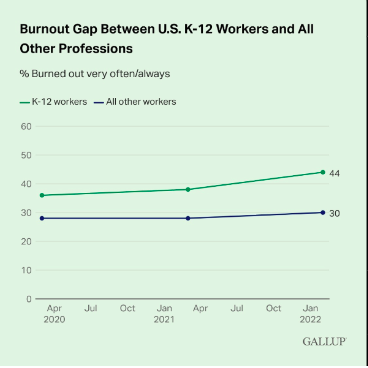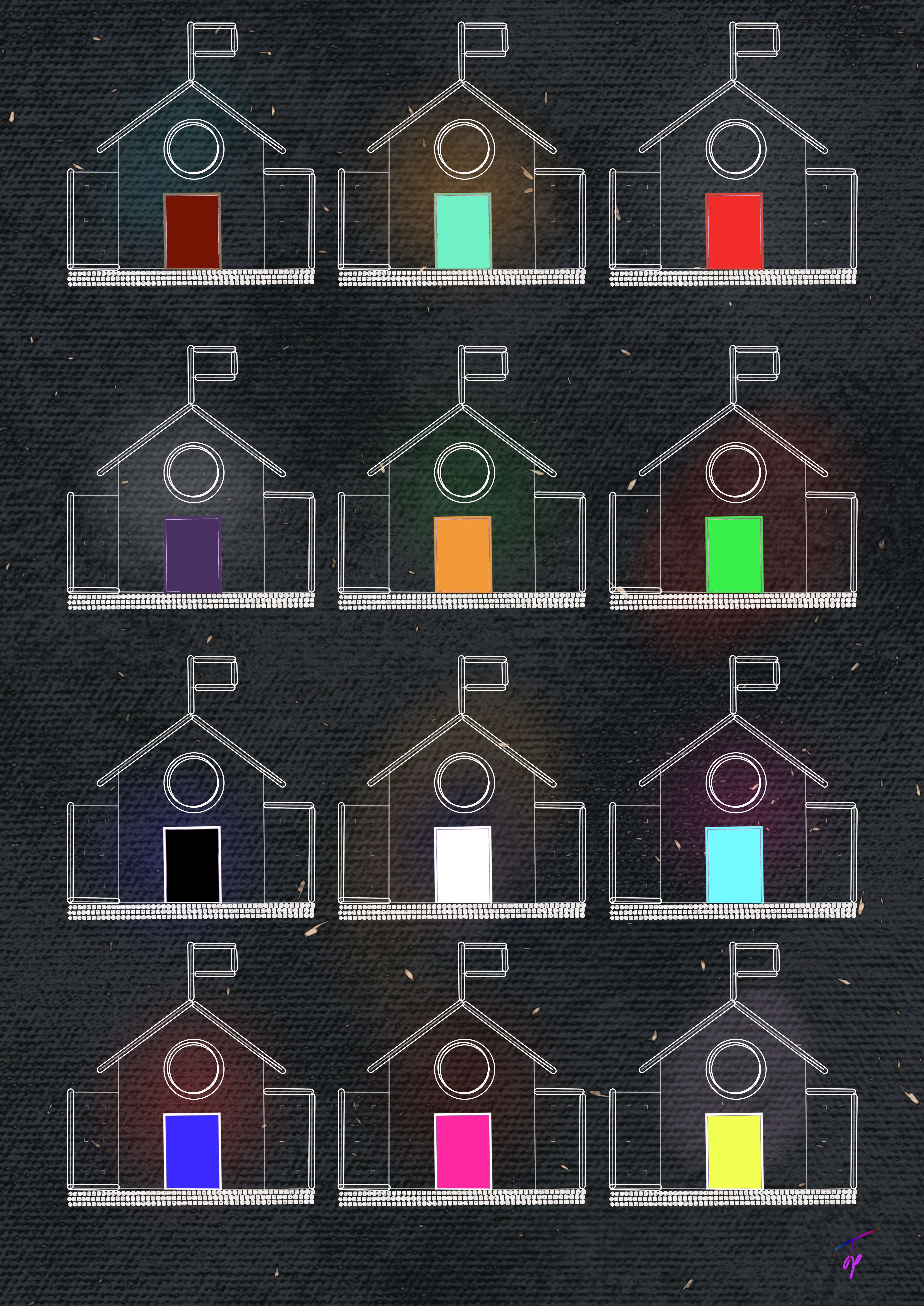The 94-6 Rule : for Education
We have all seen the numerous headlines. There is a pressing need for alarm. The consequences of this burnout epidemic are far-reaching. Attrition, burnout, salary and teacher vacancies are some of the ailments that currently plague the system.
The magnitude of the challenge becomes evident upon evaluation of professional burnout data. According to Gallup, teachers are leading the way in terms of burnout across all professions.

This burnout is correlated with numerous negative outcomes including higher rates of attrition, absenteeism, depression, anxiety, decreased work performance.
One lingering question remains: why can schools not function as intended for all students? Reforms often appear to make tradeoffs that project a kind of inevitability, however this nihilistic perspective only empowers cynics. I say this as a recovering cynic. Schools can’t be treated like a business for the same reason no one expects a cat to bark. While they are not comparable, let’s humor this line of thinking for a moment.
The 94-6 Rule:
The 94-6 rule originates from the work of W. Edwards Deming, a renowned statistician and management consultant. Deming posited that in business systems, 94% of problems are attributable to the system itself, while only 6% are caused by special causes or individual errors.
For example, you own a factory and your job is to create spoons, except your spoons keep coming out looking like forks. The 94-6 rule would suggest that you may have a system issue and it isn’t Sally playing fast and loose on the assembly line.
Translated to Millennial-ese, it basically says, “Don’t hate the player, hate the game.”
While Deming’s principles gained traction and is credited with revolutionizing business management strategies, the education sector has been slow to embrace this systemic perspective, despite mounds of evidence. The systemic approaches leaders tend to enact are much more draconian and punitive. This is evidenced by the persistent tendency in education to attribute failures to individual teachers or students, rather than examining the broader system. This resistance to Deming’s principle in education stems from various factors, including deeply ingrained cultural beliefs about individual responsibility, merit, political pressures, and the complex, multifaceted nature of educational outcomes.
The 94-6 Rule in Education:
Having established the bonafides of the 94-6 framework, applying the rule to education provides a powerful framework for understanding the challenges in our school systems. It suggests that 94% of educational problems stem from systemic issues, while only 6% can be attributed to individual teachers or students. This perspective challenges the prevalent narrative that often places the burden of educational outcomes squarely on teachers’ shoulders.
Identifying the systemic challenges is key to understanding the depth of systemic changes that are needed.
Some key systemic issues (94%) in education include
-
- Inadequate funding and resource allocation
-
- Overcrowded classrooms
-
- Inadequate autonomy provided that handicap schools abilities to be responsive
-
- Outdated curricula and teaching methods
-
- Lack of support for diverse learning needs
-
- Bureaucratic inefficiencies
-
- Inconsistent policies and frequent reforms
-
- Socioeconomic factors that are proven to affect student performance
Individual factors (6%) might include:
-
- Teacher performance and preparation
-
- Student motivation and engagement
-
- Individual learning differences
The resistance to accepting this 94-6 distribution in education is palpable. Unlike in business, where systemic analysis is often welcomed for its potential to improve efficiency and profitability, the education sector frequently reverts to individual blame. This resistance manifests in various ways:
-
- Teacher evaluations that don’t account for systemic constraints
-
- School improvement plans that focus on teacher training while ignoring resource limitations
-
- Public discourse that blames “bad teachers” for educational shortcomings
-
- Policy reforms that emphasize teacher accountability without addressing systemic issues
This misalignment between the reality of systemic challenges and the focus on individual accountability creates a perfect storm for teacher burnout. Educators find themselves constantly struggling against systemic barriers while being held responsible for outcomes largely beyond their control. We are juggling on a unicycle.
The application of Deming’s 94-6 rule to the educational landscape reveals a stark reality: the overwhelming majority of challenges faced by our schools are rooted in systemic issues rather than individual failings. As we grapple with the after effects of teacher burnout, it becomes increasingly clear that blaming educators for shortcomings is not only misguided, it’s counterproductive.
By utilizing the 94/6 rule as a lens, a clear path to meaningful reform emerges. To truly support both teachers and students, we must shift our focus from punitive measures to systemic reform. The time has come for educational leaders, policymakers, and communities to recognize that real change requires a collective effort to dismantle the barriers that hinder our schools. By embracing a holistic view of education—one that prioritizes systemic improvement over individual blame—we can create an environment where teachers feel valued, supported, and empowered to inspire the next generation.
With this, I stand firmly alongside those who have long advocated for our schools to fulfill their promise of providing quality education for every student. Only by uniting in this effort can we break free of this current cycle of burnout and disillusionment that plagues our education system. We must demand action and change so that every child has access to the education they deserve.












